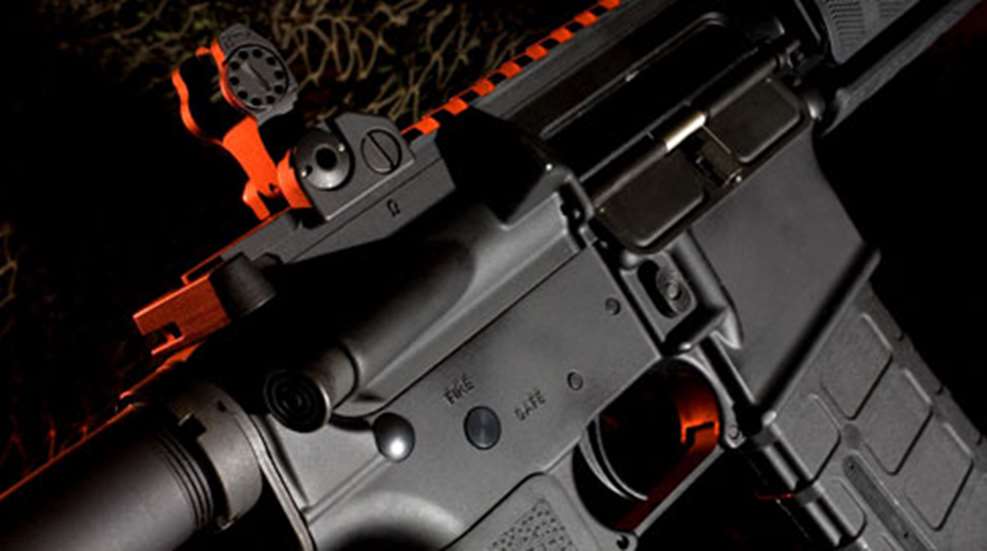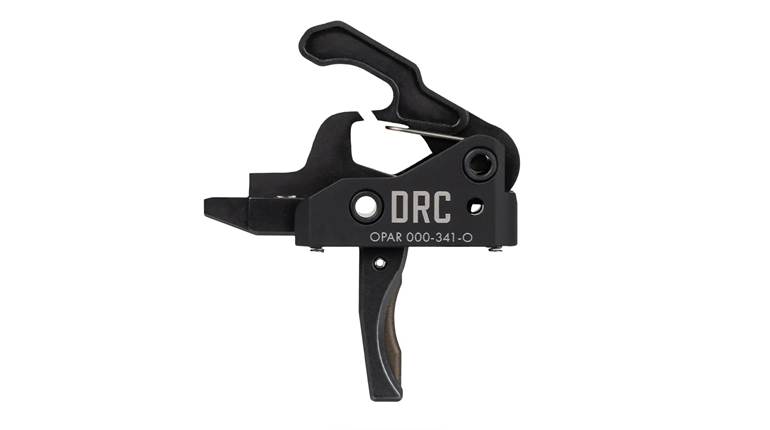
Gun owners have strong opinions when it comes to Eugene Stoner’s AR design. There are those who decry the path of the “new and improved” gas piston guns as mechanically unsound and inherently flawed. On the opposite side are those who deride the traditional AR operating system as a poor design, self-fouling and jam-prone. Standing in the middle of the fork is everyone else, the undecided, trying to determine which way to turn.
The first and most important reference mark is the fact that the Stoner-designed AR with a direct gas impingement system is by far the longest serving military service rifle in U.S. history, but its reign has not gone unchallenged.
In 1986, the Army mounted the Advanced Combat Rifle (ACR) project to look into replacing the AR. Heckler & Koch proposed a caseless ammo gun while Colt, McDonnell Douglas, Steyr and AAI Corporation came up with a variety of candidates that didn’t meet the Army’s needs. The government spent $300 million on the ACR program without a useable replacement.
Picking up the pieces of the ACR program was the Objective Individual Combat Weapon program (OICW) which led to HK’s XM8. The XM8 included a 20 mm grenade firing module along with a 5.56 NATO HK G36 variant as its kinetic component. The OICW XM8 was all kinds of cool to look at it, but it was plagued with cost, weight and functionality problems and resulted in another goose egg for the U.S. military, as did the XM8 as a stand alone platform.
The most recent military rifle program was the SCAR (Special Operations Combat Assault Rifle) run by the Special Operations Command (USSOCOM). SCAR’s scope was far less ambitious than either the ACR or OICW programs, which were “Big Army” projects to replace the M16. The SCAR program was limited to fielding a rifle for Special Operations forces, which have a separate budget. The winner of the SCAR program was FN Herstal, the legendary Belgian manufacturer that produced so many of John Browning’s designs.
And yet, in spite of these highly publicized attempts to replace the AR, none have completely succeeded. Either the entire small arms industry is incapable of bettering the AR, or the Army imposed such requirements that none could meet them. It’s probably a combination of the two, but the fact remains that the basic AR designed by Eugene Stoner in the 1950s continues to soldier on.
Operating Systems
The AR is a self-loading rifle that performs a basic set of functions without manual assistance from the operator. After the trigger is pressed, the gun must fire a cartridge, extract the fired case, eject it, pick up a fresh cartridge and transfer it from the magazine into the chamber, lock the breech and cock the hammer (or striker) to return the rifle to battery—a round in the chamber, ready to fire with another press of the trigger.
It’s really a straightforward mechanical operation. The best and brightest firearms designers have achieved it for the past 120 years with a variety of ingenious solutions.
Two of those solutions are the direct gas impingement system and the short stroke gas piston system. Eugene Stoner utilized the impingement system in the AR. It works by bleeding propellant gases through a port at the end of the barrel and channeling the gases back through a tube to directly strike, or impinge, a bolt carrier, thereby pushing it rearward to extract and eject the fired case and, as it’s propelled forward by a spring, to strip a fresh round and push it into the barrel’s chamber.
A short stroke gas piston system is what Mikhail Kalashnikov used on his AK-47. The piston system also relies on propellant gases that are bled through a small hole in the barrel, but instead of the gases traveling through a tube to impact a bolt carrier, the gases are contained in a cylinder in which there is a piston, like in a car. The gases push the piston, which in turn is connected by a rod to a bolt carrier that moves rearward to extract and eject the fired case and, moving forward from spring pressure, strip a fresh round from a magazine, chamber it and lock into battery.
What’s causing a fork in the AR road right now is that a number of manufacturers have decided to modify the Stoner design to operate with a piston system instead of an impingement system. The question before the house is: Do we need to fix the AR with a new operating system and, if so, do the new piston systems achieve that remedy?
An Answer In Search Of A Question
The sole claim to fame of a piston system is that it’s more reliable than an impingement system. The reason given is that hot, dirty gases are not spewed into the action of the rifle like the direct impingement system, fouling itself with heat and carbon, depositing black crud all over the bolt carrier. Instead, the gases are contained in a gas cylinder which is self-cleaning.
No one asserts that piston systems are more accurate or more durable, just that they’re more reliable because the bolt carrier is not caked with fouling and subjected to scalding heat.
Advocates of the piston system are quick to ask, “Why would you dump hot, dirty gases where your rifle feeds?”
There’s no question that heat and fouling are highly detrimental to moving parts in a firearm. The solution, however, does not necessarily require redesigning the whole gun. Fouling problems can be avoided quite easily with a marvelous little thing called lubrication.
“Keep her wet. That’s how you run an AR,” a hard-bitten range master once told me. “I don’t care what you squirt in there—BreakFree, WD-40, lime juice. It doesn’t matter. Soak her good.”
A good friend of mine, Sgt. Jason Davis of the Arcadia (Calif.) Police Department, has an M4 carbine with more than 2,500 rounds through it without cleaning. “I just keep it lubed,” he said. “I run it with a suppressor too, so it gets even dirtier. I’ve never had a malfunction, not one.”
Davis is not a glutton for punishing his gun. His no-cleaning test came about by chance.
“At first, I just didn’t get around to cleaning it, but after awhile, I realized I had a sort of torture test going without intending to. I wondered how long I could go without cleaning my M4, so I made a point of logging the rounds and just didn’t clean the gun. I lube it up before every session,” the lawman said.
I’ve never gone that far, but I’ve fired 1,500 rounds without cleaning, but I keep my bolt carrier wet. Reliability is not an issue with liberal lubrication.
Accordingly, it’s my opinion based on personal experience and a lot of anecdotal evidence that Eugene Stoner’s gas impingement system works as advertised. The piston system guns are, as the late Col. Jeff Cooper liked to say, “An ingenious solution to a nonexistent problem.”
Unintended Consequences
Even if you take the argument of the piston system at face value—that it’s more reliable—you still have the law of unintended consequences to deal with. First, piston guns generate more felt recoil than impingement guns (although that’s not a huge detriment since we’re talking about a 5.56 mm here, a “poodle shooter” as Col. Cooper sniffed).
More importantly, however, a piston system alters the mechanics and timing of an AR in a manner that a growing number of shooters are claiming is harmful to the gun.
There are new systems being developed, tested and marketed now, but generally the problem is that a piston system is attempting to retroactively adapt a bolt carrier that was designed to function with direct impingement.
What we’re seeing are piston systems substituted for the gas tube of an impingement system by simply inserting a piston into the mechanism. The same buffer system is used to return the bolt carrier into battery, the same geometry of the bolt carrier is utilized and the same timing of the cycle rate is retained.
The only difference, really, is that a piston system gives the bolt carrier a mighty whack with a piston instead of blowing gas into it. The geometry is the same. The area of the bolt carrier that is being impacted by the piston is where the gas key would be on an impingement system. In fact, many of the piston systems simply replace the gas key on the bolt carrier with a flat-faced nubbin that is the anvil to the piston’s hammer.
This protrusion is attached to the bolt carrier well ahead (toward the muzzle) of its center of gravity. Going back to see-saw 101, we realize that if a force is applied well in front of a pivot, what happens? The rear tilts.
This see-saw effect is causing bolt carriers to tilt within the receiver, retarding their movement and imparting a non-linear force to the assembly. Stoner did not design the bolt carrier group to be hammered.
Perhaps the most “tacti-cool” of the piston systems is the HK 416 which came into the U.S. originally as a “military only” firearm in 2004 and then, much later, trickled out to law enforcement. The lure of forbidden fruit seemed to hype the public’s interest in the 416 and caused quite a bit of Internet chatter.
Then comes price. Ruger introduced a piston system AR—the SR15—that retails for over $2,000. I found an M4 from one of the more popular piston-gun makers listed on for $1,925. At the same time you can buy an excellent direct impingement AR for around $1,000.
At this fork in the road, I’m grabbing a bottle of BreakFree and taking the impingement path.
For more, check out Customizing an AR Rifle, AR-15 Tactical Accessories, The Specs of MilSpec and The MilSpec Definition.





































